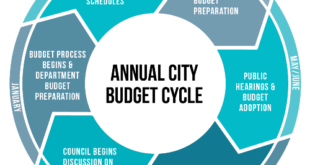(Editor’s note: Randy Van Dyne, executive director of the All Hazards Training Center at the University of Findlay, Ohio, spoke at the 2018 Ohio News Media Association convention on workplace security and wrote this column at ONMA’s request. One of the center’s specialties is training media outlets such as ABC News on both on-site and off-site safety.)
By Randy Van Dyne
All Hazards Training Center, University of Findlay
Following the recent tragedy at the Annapolis Capital Gazette, here are a few important steps local news organizations can take now to improve overall security for your staff and your facilities.
Make sure you communicate and work with your local law enforcement agencies and get in the habit of routinely sharing all of your questions and concerns with them.
For example, it is my understanding that although there was some initial communication between the Annapolis paper and local officials in 2013 about concerns with the perpetrator, there was a lack of follow-up – by either the paper or law enforcement. That seems unbelievable, but probably more common than you think.
Local law enforcement may be able to do or suggest something that helps you prevent a tragedy. Look at them as an ongoing resource.
Other advantages of working with local law enforcement:
- They can conduct active shooter training for you or provide you with a local contact who can. This training takes about an hour to complete, can be done in larger groups, and will give the trainees a sense of what to do, and how to protect themselves, if faced with an active shooter situation. It is very important that you do this.
- Getting to know local law enforcement better is always a good idea – like the old saying goes, “It is never a good idea to make friends in a foxhole.” Get to know each other before any kind of crisis/disaster occurs.
- Starting a more active working relationship with local law enforcement will have benefits in the implementation of ongoing violence prevention programs (discussed in detail below).
- Have local law enforcement conduct a security review/walk-through of your buildings and make suggestions on improvements you can make. Some things to consider are:
- Update policies about access to visitors, vendors and other tenants.
- Have a secure door that locks.
- Regarding locked doors – who has access? Old key cards still out? When was last time codes changed?
- Check security of windows, side doors, loading docks, and other points of entry.
- Have multi-purpose, accessible emergency exits.
- Consider installing panic buttons.
- Install cameras at each entrance to your newsroom.
- Create a digital threat reporting policy.
- Put procedures in place to quickly notify authorities.
- Have a contingency plan.
- Schedule an active shooting drill.
- For more information and additional suggestions see this Poynter article.
Don’t fall into the trap of getting active shooter training for everyone in your organization and thinking you are prepared.
Far too many organization believe that when they collectively know what to do when someone shows up with a gun, they are completely prepared. There is a lot more you can/must do to help prevent incidents from ever occurring
If I could give one piece of advice that can help you prevent workplace violence now and in the future, it is to implement a proven violence prevention program.
Contrary to public opinion, virtually no one makes a sudden decision to show up one day at a workplace to begin shooting. The motivation of almost all violent perpetrators is to get revenge against those that they feel have harmed them. This is called targeted violence and assailants plan their attack, sometimes for months. Potential perpetrators can be employees, former employees, customers/readers, neighbors, activists, or anyone with reason to get even with a particular organization, its owners, its employees, or even what it stands for.
Potential perpetrators move through the steps of a process called the “targeted violence continuum.” First comes ideation. They convince themselves that they must get even. Next, they plan how they might carry out the idea, selecting a date, a location, a weapon, or a target list. Then, the assailant prepares: They locate a gun, make sure they have plenty of ammunition, and choose a time to attack when they can be certain the targeted individuals will be at the workplace. Working through this continuum takes the perpetrator some time, but eventually they reach the last step, implementation, and carry out their plan.
Learn to take advantage of the time provided to set up a network of information gathering on potential internal and external violence perpetrators, and determine how best to intervene before they reach the implementation stage.
To gather intelligence, you must teach workers what to report and exactly whom to report it to. You are looking for certain behaviors such as unusual moods, change in moods, threatening or strange writings, text messages, Facebook postings, verbal comments, etc. Make sure your system constantly gathers all the information it can. This is an ongoing program. Don’t implement it for a few months and let it lapse. You never know when a potential workplace violence issue may become a threat to you.
Next, establish a “threat assessment management team.” Team members should include representatives from your security group, your human resource department and your management or administration. Important outside team members include local LE and local mental health agencies. Local LE can provide you with information that is more community based. Is the person in question a bad actor in the community? Local mental health provides you with a perspective you need, but probably don’t have on your own. The team is charged with collecting the information and determining how to best proceed – on a case-by-case basis. Is the person of concern just having a “bad day” or is there something deeper going on?
The ultimate goal is to intervene before the potential perpetrator moves through to the final stage of the continuum. Many times, the issues causing their feelings are resolvable. There may be mental health or other underlying issues to contend with. Law enforcement may have to step in. Your organization must be proactive to prevent the occurrence of workplace violence.
This can be done by using programs such as the one we teach called Threat Assessment Management (TAM) that was developed by the U.S. Secret Service. For more information, their website is www.secretservice.gov/protection/ntac/. Implementing TAM programs isn’t difficult with assistance from outside organizations that have the necessary experience.
If we can be of service in any way, please don’t hesitate to contact us.
Randy Van Dyne is the Executive Director of the All Hazards Training Center (AHTC) at the University of Findlay. The AHTC has provided environmental, safety, health and security training to over 250,000 participants, coast-to-coast since 1989. The AHTC is one of the nation’s leading providers of school and workplace violence prevention training. Randy also initiated degree programs in Environmental, Safety, and Occupational Health at Findlay that have graduated more than 2,000 students.
 Nevada Press Association The best in Nevada journalism since 1924
Nevada Press Association The best in Nevada journalism since 1924



